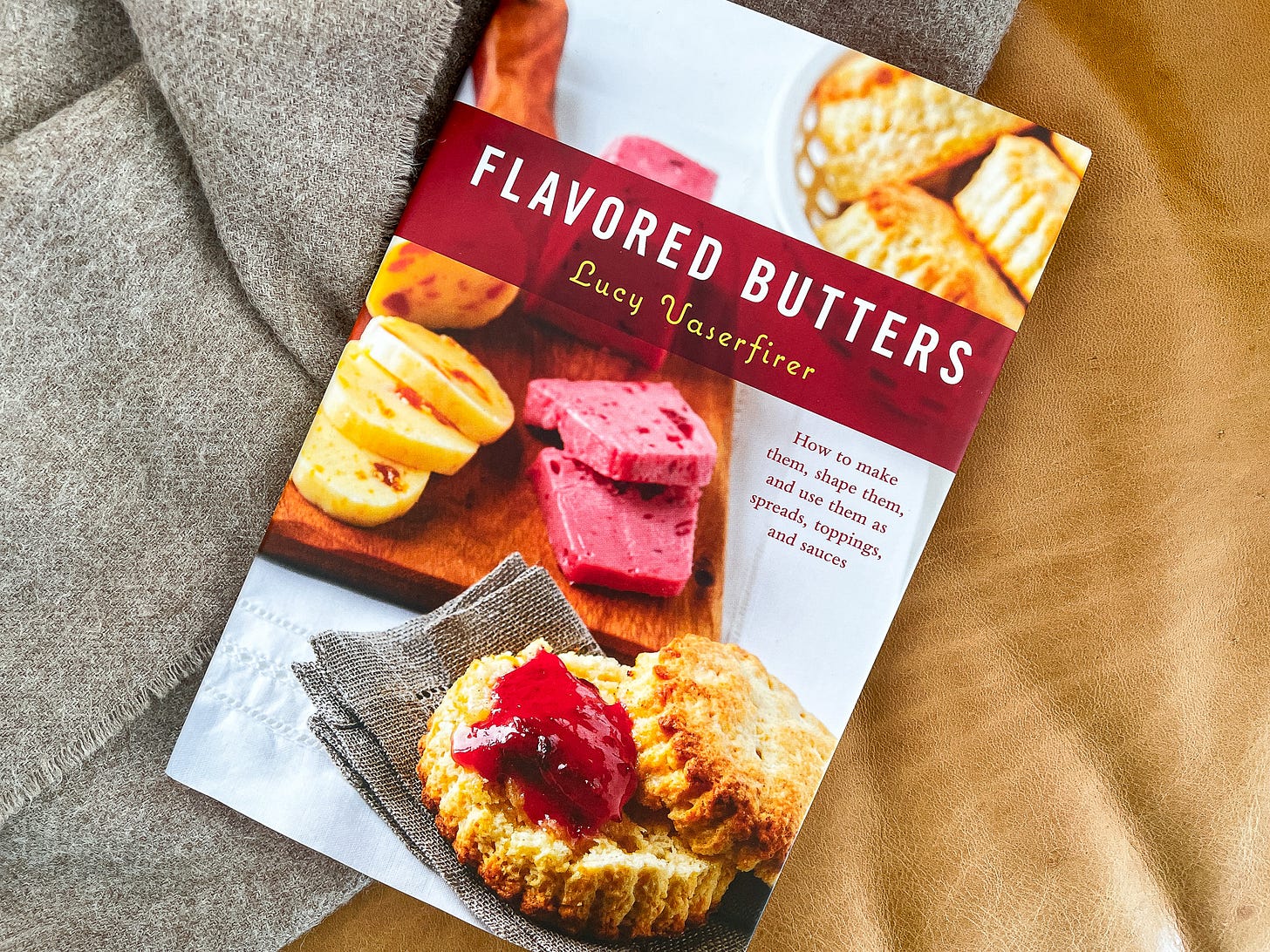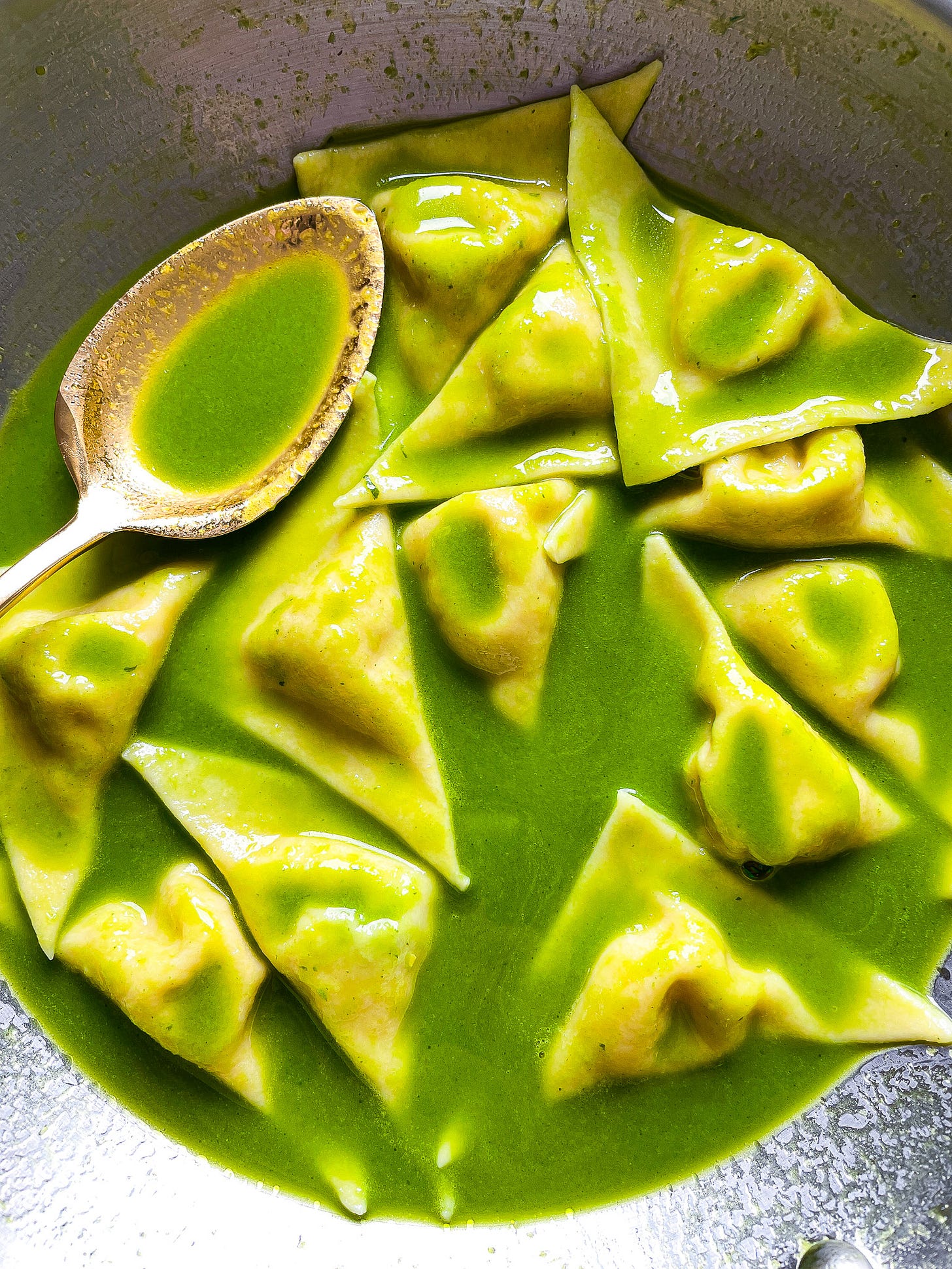Of all the world’s food trends, I’m an unapologetic supporter of butters—specifically, flavored butters. In culinary school, we called them “compound butters,” an overly complicated name for a very simple technique. Because flavored butters are just that: softened butter mixed with something, well, flavorful. And although they’ve long been associated with white-tablecloth restaurants, now, at last, these fanciful butters—savory, sweet, spicy, herbaceous—are finally taking their rightful place in the home kitchen.
I’ve had a rotating repertoire of flavored butters for a long time. I especially lean on them during the warmer months, when I want to limit my stove time: parmesan-garlic butter is weeknight pasta’s best friend; lemon-chive butter makes summer seafood sing; tomato-anchovy butter is crusty bread’s dream (all of these recipes will be in my forthcoming cookbook, by the way!). A few years ago, fellow pasta-maker and cookbook author Lucy Vaserfirer sent me a copy of her book Flavored Butters, a pocket-sized guide to this small-yet-wondrous corner of cooking. I was hard-pressed to choose as I scanned the recipes—rosemary-roasted garlic butter; porcini butter; port butter; maple-cinnamon butter; whipped vanilla butter—but finally landed on a gorgeous red chile butter. The scarlet color drew me in, but the complexity and smokiness of the chiles (ancho, pasilla, guajillo), finished with a touch of ground cumin, stopped me in my tracks. I drizzled it over agnolotti del plin and my flavored butter horizons were forever changed.

Think of flavored butters as a tool—a vehicle of culinary creativity, if you will—that makes average meals better. Special-occasion steak (horseradish butter), roast chicken (tarragon butter), and seared fish (saffron butter) are made more special, and mid-week spaghetti (sun-dried tomato butter), potatoes (caramelized onion butter), vegetables (miso butter), and midnight slices of toast (chocolate butter) become exciting. Best of all, they’re a great way to use the odds and ends in your fridge and pantry—wilting herbs, bits of cheeses, the last anchovies in the tin—giving them a second life (flavored butters store exceptionally well, too, so they can always be at your fingertips). The backbone of today’s recipe, pecorino basil butter, is all of those things: flavorful, colorful, and resourceful. Instead of another pesto or infused oil, I opted to use the bounty of my overgrown basil plant for a fragrant, sweet-salty butter that transformed frozen ravioli into a green, glossy slow-stopper.
One important note before we jump in: Your ingredients must be at room temperature before making flavored butters. These butters are quick and easy to make, but there’s still a little planning involved. Please, please, put your butter on the kitchen counter to soften, ideally for a couple of hours before you plan to use it. This is especially important for butters that incorporate liquids (like this one), so the fat and water will emulsify properly—you’re looking for your butter to be “very soft, almost slumping,” according to Lucy. For butters that don’t include any liquid (like parmesan-garlic butter), you can get away with a mostly soft butter, or whatever consistency you can mix easily. Heating the butter might cause it to break, so I wouldn’t recommend it. Just plan ahead and let nature do its thing!
Summer Corn & Mascarpone Triangoli
with Pecorino Basil Butter
Serves 4






